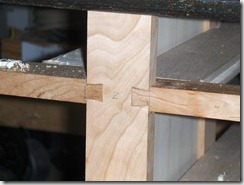What do you have in your toolbox?
 I worked thru college doing some light construction at an outdoor sporting goods store called Midwest Mountaineering (and Thrifty Outfitters – used but great stuff). One of the things I learned while working there was how to leverage what’s possible with a table saw. While the basics of cutting a straight line are expected, I was amazed at what was possible in the hands of an expert. Using the table saw, we refurbished the interior of an older Minneapolis building (circa 1900’s) creating our own moldings, doors, trim and more from raw lumber. The great thing about this experience is that I’ve been able to use what I learned on cabinetry projects I’ve done since.
I worked thru college doing some light construction at an outdoor sporting goods store called Midwest Mountaineering (and Thrifty Outfitters – used but great stuff). One of the things I learned while working there was how to leverage what’s possible with a table saw. While the basics of cutting a straight line are expected, I was amazed at what was possible in the hands of an expert. Using the table saw, we refurbished the interior of an older Minneapolis building (circa 1900’s) creating our own moldings, doors, trim and more from raw lumber. The great thing about this experience is that I’ve been able to use what I learned on cabinetry projects I’ve done since.
Being good with a tool opens a lot of doors. But being good with one tool doesn’t necessarily transfer to another without recognizing you need to invest the same due-diligence to understand what’s possible and how to. This brings me to this week’s webcast on Expression Blend. In my career as a developer I’ve been working with developer tools like Visual Studio and PowerBuilder, where you spend a lot of time creating pathways and functions based on user actions and events with code. This abstraction of processes into procedural or object oriented code has been mostly non-visual in nature. However I’ve always found the visual tools to be easier to get started with, but limited in what’s possible. What I’ve found is that Blend has tremendous capabilities that are pretty easy to use, including visual design and integration with the data schemas that define a business domain.
Like a lathe is another tool very different from the table saw, it is invaluable for creating some types of work. Come and see what’s possible with Expression Blend by joining me for another episode of “BenkoTIPS Live & On Demand”. See you on Wednesday!